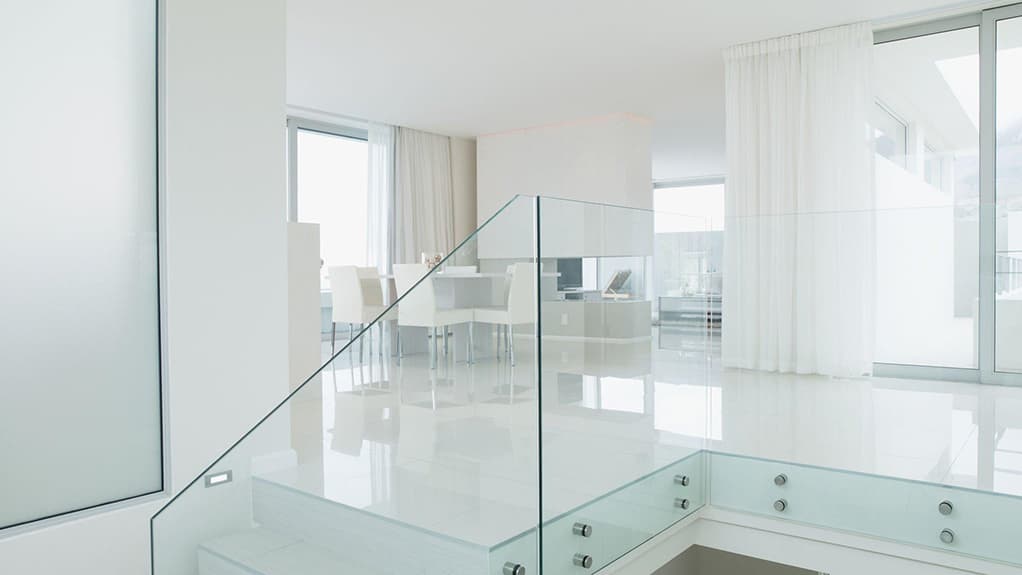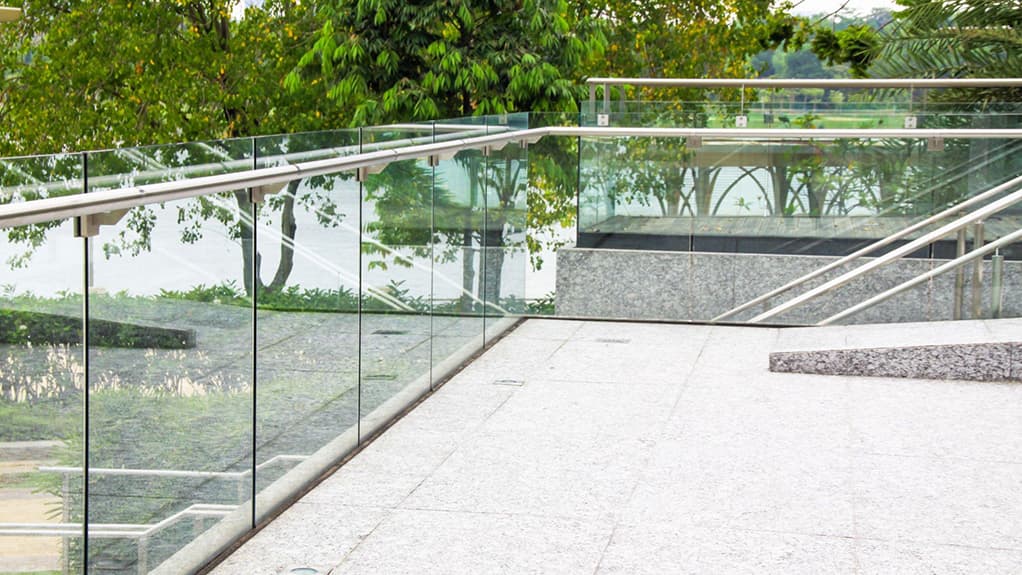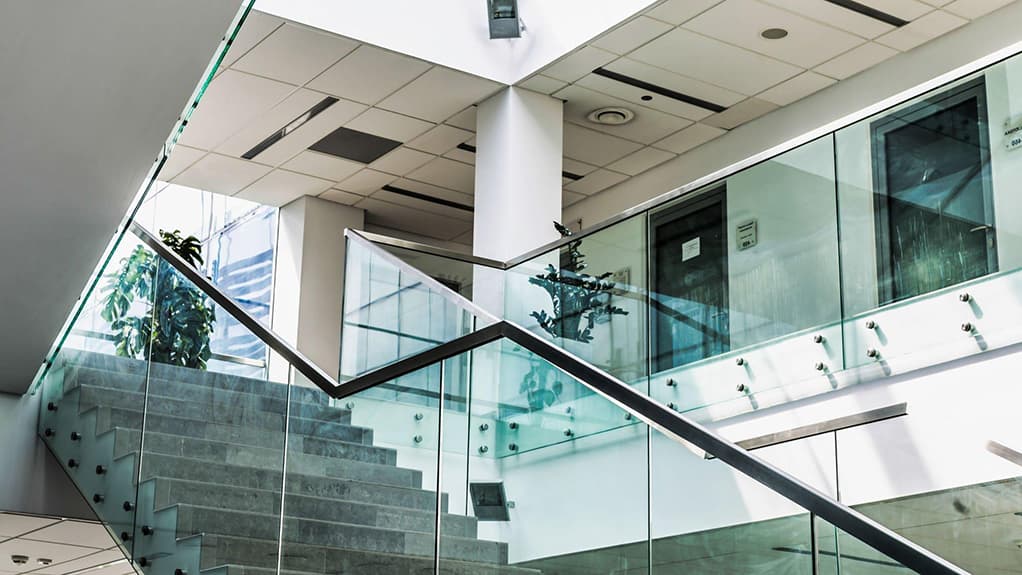Glass railing systems utilize various hardware and fittings to ensure stability and safety. These components have different purposes, with each being equally important.
Table of Contents
Some of these can be customized to match the aesthetic preferences of clients. Regardless, quality must come first for hardware and fittings used in glass railing systems.
Since all glass railing parts are interconnected, failure of one can risk safety. It’s essential for businesses to get their hardware and fittings for glass railings from reputable manufacturers that produce high-quality parts.
Unity Metal manufactures top-quality glass railing components that comply with local building requirements. In this article, we’ll cover how the hardware and fittings used in glass railings affect quality, durability, and safety.

The Importance of Quality Hardware and Fittings
First and foremost, using high-quality hardware and fittings ensure safety. This comes at the forefront of any railing system. Even if the design assures safety, it won’t hold well if it uses bad quality parts.
That said, the quality of individual components go hand in hand with the overall protection a glass railing provides.
Quality parts also mean durability. The environmental factors, the load the components carry, and temperature differences are just a few things that can affect this. Safety will be in doubt if the glass railing can’t withstand these.
Lastly, quality glass railing parts have a pleasing look. The precision in manufacturing these parts makes them look smooth and polished. Although aesthetics and quality don’t always correlate, quality hardware and fittings maintain their visual appeal over time.
Types of Hardware and Fittings for Glass Railing Systems
- Glass panels are the primary component of glass railing systems. The glass used for railings is typically made from tempered glass. The panels come in various thicknesses and designs. Our glass panels are 9.53 to 21.52mm thick, for example.
- Glass clips secure the glass panel to the supporting structure. Also known as glass clamps, these clips feature different designs, such as D-shaped, square, or round.
- Standoff pins follow a multi-step installation process to provide a clean appearance. The standoff base is drilled into the mounting surface, and the glass nails/clips hold the frame in place while the standoff pins allow adjustment to secure the glass.
- Aluminum Base shoes hold the glass panel from the bottom. Typically made from aluminum, base shoes are a common component for frameless glass railings.
- Handrail brackets attach the handrail to the glass railing system, which is often required by the local building codes to support users.
- Stainless steel posts hold glass panels vertically. These vertical supports have more applications in designs where standoffs can’t be utilized.
- Cap top rails cover the topmost edge of the glass to provide stability. Stainless steel slotted tubes are the most common cap top rails for glass railings, which may be required by building codes.
- Spiders and routels attach the glass panel to the building structure without using posts or frames. Next to standoff pins, they are used for frameless and point-supported glass railings.
- Spacers provide consistent spacing between glass panels to ensure proper alignment.
- Fasteners like bolts, screws, anchors, and pins secure all the components, ensuring they are mounted appropriately.

Choosing the Right Hardware and Fittings for Your Glass Railing
There are a couple of critical factors to consider when choosing hardware and fittings for glass railing systems. Aside from meeting safety standards, durability against the environment, strength, load requirements, and compatibility are must considerations.
Regardless of the application, corrosion resistance and strength of the metals must withstand more than the typical load. A good manufacturer should present various options for both indoor and outdoor railings.
We use 316L stainless steel for standard outdoor applications. If your location gets severe rain or is in a coastal region, we may recommend duplex 2205 or 2507 for better corrosion resistance. The higher molybdenum and nickel in the chemical composition of these steel enable superior corrosion resistance, making them perfect for outdoor railings.
For most uses, however, 316L stainless steel is more than adequate to prevent parts from rusting. Other than corrosion resistance, tensile and yield strength must be proper for the railing system. Since glass panels can get heavy, the tiny components must have enough toughness and strength to carry the load.
Also, the steel hardness measured under the Rockwell hardness scale must be reasonable. If it’s too hard or soft, it can impact the longevity and integrity of the fittings.
All these must come together without compatibility issues. Even if one component isn’t compatible with another, it can create complications during installation. Consider sourcing hardware and fittings from a single manufacturer to ensure compatibility across all the parts.

Maintenance and Care for Glass Railing Systems
Glass railings require minimal care. All it takes to clean everything is wiping with a simple cleaning solution of dish soap and a thorough rinse using warm water. Cleaning an entire glass railing system, from top rails to base shoes, takes only minutes.
Manufacturers follow various tests to ensure product safety. Testing glass against breakage and measuring the load each component can hold are a few examples.
Fortunately, inspection won’t take much time for the user. A thorough look while cleaning is enough to detect problems.Here are the common issues glass railings face and how to address them.
- Fogging: This usually happens due to sealant failure. Properly sealing the glass panels should prevent moisture intrusion and fogging that comes with it.
- Corrosion: Although corrosion and rust aren’t an issue with high-quality hardware and fittings, they can happen. Applying a protective finish and regular maintenance are the two simple ways to prevent corrosion.
- Scratches: The hardware and fittings used can get scratched, including glass panels. The parts should be cleaned gently using non-abrasive cleaning supplies. For extra protection, consider using protective films.

Conclusion
Using quality hardware and fittings ensures safety by maintaining structural integrity. They further boost the protection the railing system provides. Quality parts also last longer, making them cost-effective. Overall, quality hardware and fittings get you a quality glass railing system.
Unity Metal manufactures various railing system components that cater to wholesalers, suppliers, and contractors in North America. We offer diverse business solutions, including OEM manufacturing, free consultation, and sample products.
Read more on the Unity Metal Blog and contact us to request a quote for sourcing quality wholesale railing products.


